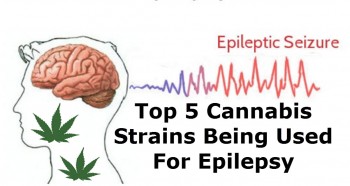
The Latest Cannabis Scare: Why a 55-Person Study Shouldn't Panic Millions of Users
Just when you thought we'd moved past the era of "Reefer Madness" headlines about cannabis and heart health, a new study has sent cannabis prohibitionists into overdrive. "Cannabis use in any form directly linked to significant risk of heart damage," screams the latest round of sensationalized reporting. The media machine has latched onto this research with the fervor of a temperance crusader finding a bottle of whiskey in Sunday school.
But before you flush your stash down the toilet in a panic, let's take a closer look at what this study actually says—and more importantly, what it doesn't say. The research, published in JAMA Cardiology by Dr. Leila Mohammadi and Dr. Matthew Springer at UC San Francisco, examined a whopping 55 participants and found some changes in blood vessel function among cannabis users compared to non-users.
Fifty-five people. In a country where millions consume cannabis regularly, researchers studied fewer people than attend an average high school basketball game and extrapolated conclusions about "significant risk of heart damage from cannabis" for the entire cannabis-using population. This would be laughable if it weren't being used to justify continued prohibition and spread fear among patients who rely on cannabis for legitimate medical needs.
I've been tracking cannabis research for years, and this pattern is as predictable as it is frustrating. Every few months, a small study emerges with alarming conclusions about cannabis use, gets amplified by media outlets hungry for clicks, and disappears from public discourse when larger, more comprehensive research fails to replicate the findings. Meanwhile, the prohibitionist machine uses these studies as ammunition for maintaining failed policies.
Let's examine this latest research with the critical eye it deserves and separate legitimate health considerations from prohibition propaganda masquerading as science.
The Study: What They Actually Found (And What They Didn't)
The UCSF study examined 55 participants—a sample size so small it barely qualifies as preliminary research. To put this in perspective, most reputable pharmaceutical studies require hundreds or thousands of participants to draw meaningful conclusions about health effects. Yet this 55-person study is being presented as definitive evidence of cannabis's cardiovascular dangers.
The researchers divided participants into cannabis users (people who consumed cannabis at least three times per week for at least one year) and non-users who didn't use any nicotine products. Among the cannabis users, some smoked flower (averaging 10 years of use) while others consumed edibles (averaging 5 years of use).
The study found that cannabis users—both smokers and edible consumers—showed decreased blood vessel function compared to non-users. Specifically, vascular function in cannabis users was "roughly half that of nonusers," which researchers linked to endothelial dysfunction, a condition affecting the cells lining blood vessels.
Here's where things get interesting (and problematic): The study found different mechanisms between smoking and edibles. Cannabis smokers showed harmful changes in their blood serum that affected blood vessel cells, while edible users didn't display these same serum changes. However, both groups still showed reduced vessel function.
Dr. Springer noted that "the specific mechanisms behind THC's effect on blood vessels remain somewhat unclear." This is scientific speak for "we don't actually understand what's happening here." Yet despite this acknowledged uncertainty, the study is being presented as definitive proof of cannabis's cardiovascular dangers.
The researchers observed endothelial dysfunction—impaired function of cells lining blood vessels—which they suggest could increase risks of heart attacks and hypertension. They theorize that THC might affect cardiovascular health through interactions with cannabinoid receptors in the heart or blood vessels, but this remains speculation rather than established fact.
Critically, the study makes no claims about actual cardiovascular events. They didn't measure heart attacks, strokes, or other concrete health outcomes—only changes in blood vessel function that they theorize might increase future risks. This distinction between biomarkers and actual health outcomes is crucial but often gets lost in sensationalized reporting.
The study also acknowledges significant limitations that somehow got buried in media coverage. The sample size is tiny, the study design can't establish causation, there's no long-term follow-up, and researchers didn't control for numerous confounding variables that could affect cardiovascular health.
The Critique: Small Sample, Big Claims, Bigger Problems
When examining this study critically, the problems become immediately apparent. Let's start with the most obvious issue: sample size. Fifty-five participants is laughably small for drawing broad conclusions about cardiovascular health effects in millions of cannabis users. Most clinical trials examining cardiovascular medications require thousands of participants because heart health involves complex, multifactorial processes that small studies simply cannot capture.
The study design also presents serious limitations. This was an observational study comparing existing cannabis users to non-users, which means researchers can only identify correlations, not causation. The authors themselves acknowledge this limitation, yet media reports consistently present the findings as proof that cannabis causes cardiovascular damage.
"We found an association, but we can't prove causation," should be the headline, not "Cannabis directly linked to heart damage." The difference isn't semantic—it's the distinction between legitimate science and fear-mongering.
The lack of controlling for confounding variables is another major weakness. Cannabis users might differ from non-users in numerous ways that affect cardiovascular health: diet, exercise habits, alcohol consumption, stress levels, socioeconomic status, access to healthcare, or use of other substances. The study doesn't adequately account for these factors, making it impossible to isolate cannabis as the cause of observed differences.
The duration mismatch between smoking and edible users (10 years versus 5 years average) introduces another confounding variable that makes comparisons problematic. Are the differences due to consumption method, duration of use, or other factors? The study design can't answer this question.
Perhaps most importantly, the study measures biomarkers rather than actual health outcomes. Finding changes in blood vessel function doesn't automatically translate to increased heart attacks or strokes. Many interventions that improve cardiovascular biomarkers fail to reduce actual cardiovascular events in larger trials.
Dr. Springer admits that "the specific mechanisms behind THC's effect on blood vessels remain somewhat unclear." If researchers don't understand the mechanisms, how can they confidently predict clinical outcomes? This uncertainty should temper claims about "significant risk," not support them.
The study also fails to examine dose-response relationships. Do these effects occur with occasional use or only heavy consumption? Are they reversible if cannabis use stops? Do different cannabis products with varying cannabinoid profiles produce different effects? These crucial questions remain unanswered.
Historical Context: The Pattern of Cannabis Scare Studies
This latest cardiovascular scare follows a well-established pattern in cannabis research that anyone paying attention should recognize. For decades, small, preliminary studies have emerged claiming to show various dangers of cannabis use, only to be contradicted by larger, more comprehensive research.
Remember the cannabis-lung cancer connection that dominated headlines in the 1990s and early 2000s? Multiple small studies suggested that smoking cannabis might increase lung cancer risks similar to tobacco. The media ran wild with these findings, and prohibitionists used them to argue against medical marijuana programs.
Then came the large-scale studies. A 2006 UCLA study by Dr. Donald Tashkin—originally designed to prove the cannabis-lung cancer link—found no association between cannabis smoking and lung cancer, even among heavy users. Follow-up research has consistently failed to establish this connection, despite decades of looking for it.
The pattern repeated with claims about cannabis causing psychosis, lowering IQ, reducing motivation, and causing numerous other problems. Small studies generate alarming headlines, while larger, more rigorous research either fails to replicate findings or shows the relationships are far more complex than initial reports suggested.
Cannabis and Gateway Drug theory provides another instructive example. Early studies showed that cannabis users were more likely to use other drugs, leading to claims that cannabis was a "gateway drug." Larger studies revealed that this correlation was explained by shared risk factors, not by cannabis causing other drug use.
The cardiovascular research follows this same trajectory. A 2014 study linked cannabis to heart problems, generating similar headlines. Subsequent research has produced mixed results, with some studies finding no cardiovascular risks and others suggesting potential benefits for certain heart conditions.
What's particularly frustrating about the current cardiovascular study is how it's being weaponized by prohibition advocates despite its obvious limitations. Organizations like Smart Approaches to Marijuana (SAM) are already using this research to oppose legalization efforts, presenting it as definitive proof of cannabis dangers while ignoring its significant methodological problems.
The media's role in amplifying these studies while downplaying their limitations deserves criticism. Headlines like "Cannabis directly linked to heart damage" are misleading and irresponsible when the actual research shows correlation in a tiny sample with unclear mechanisms and unknown clinical significance.
Real-World Evidence: What Large-Scale Data Actually Shows
While small studies generate scary headlines, large-scale population data provides a more reassuring picture of cannabis and cardiovascular health. If cannabis truly caused significant heart problems, we would expect to see clear evidence in states and countries where millions use cannabis regularly.
Colorado, which legalized cannabis in 2014, provides an excellent natural experiment. If cannabis caused widespread cardiovascular problems, Colorado should show increased heart attack rates, especially among younger demographics where cannabis use is highest. Instead, Colorado's cardiovascular mortality rates have remained stable or improved since legalization.
California has had medical cannabis programs since 1996 and recreational legalization since 2016. With millions of regular cannabis users, any significant cardiovascular effects should be apparent in population-level health data. Yet California hasn't experienced the cardiovascular crisis that small studies would predict.
International data provides additional perspective. Canada legalized cannabis nationally in 2018, and the Netherlands has had de facto legalization for decades. Neither country has reported cannabis-related cardiovascular epidemics despite widespread use.
The absence of population-level cardiovascular problems doesn't prove cannabis is completely safe, but it strongly suggests that any risks are either minimal or affect only susceptible individuals. If the UCSF study's findings translated to clinically significant problems, we would see evidence in real-world data.
Emergency department data provides another perspective. If cannabis caused significant acute cardiovascular events, emergency rooms in legal states should report increased cannabis-related heart problems. While cannabis-related ER visits have increased (mostly for overconsumption of edibles), cardiovascular emergencies remain rare.
Some research even suggests potential cardiovascular benefits of cannabis. Studies have found that cannabis users have lower rates of metabolic syndrome, diabetes, and obesity—all major cardiovascular risk factors. The anti-inflammatory properties of cannabinoids might provide cardiovascular protection that offsets any negative effects.
The Sticky Bottom Line
The latest cannabis cardiovascular scare represents everything wrong with how preliminary research gets transformed into prohibition propaganda. A 55-person study with acknowledged limitations and unclear mechanisms becomes "direct evidence" of heart damage, while larger population-level data showing no cardiovascular crisis gets ignored.
This isn't to say we should dismiss cardiovascular research or assume cannabis is completely risk-free. Any psychoactive substance can have health effects, and individual responses vary. Regular cannabis users, especially those with existing cardiovascular risks, should monitor their health and consult healthcare providers about potential interactions or concerns.
However, we must maintain perspective about what this research actually shows versus what prohibitionists claim it proves. A small study finding biomarker changes doesn't justify continued criminalization of millions of adults or denying medical cannabis to patients who benefit from it.
The pattern is clear: preliminary studies generate scary headlines that fade when larger research fails to replicate alarming findings. We've seen this cycle with lung cancer, psychosis, IQ reduction, and numerous other claimed dangers. Each time, the initial panic proves overblown while prohibition advocates move on to the next scare study.
Real-world evidence from millions of cannabis users in legal jurisdictions provides more reassurance than a 55-person study with confounding variables and unclear mechanisms. If cannabis caused significant cardiovascular problems, we would see population-level evidence after decades of widespread use.
The most responsible approach is to support larger, more comprehensive cardiovascular research while rejecting attempts to use preliminary findings for policy decisions. We need studies with thousands of participants, proper controls for confounding variables, long-term follow-up for actual health outcomes, and dose-response analysis.
Until such research exists, cannabis users should make informed decisions based on their individual circumstances rather than panic over preliminary findings that may never be replicated. The history of cannabis research suggests that today's cardiovascular scare will join yesterday's lung cancer claims in the dustbin of prohibition pseudoscience.
For policymakers and media outlets, this latest study should serve as a reminder that extraordinary claims require extraordinary evidence. A 55-person study with acknowledged limitations doesn't meet that standard, regardless of how compelling the headlines might be.
The real tragedy is that this scare may discourage legitimate research into cannabis's cardiovascular effects or prevent patients from accessing beneficial treatments. That outcome would cause far more harm than any speculative risks identified in preliminary studies with obvious methodological problems.






